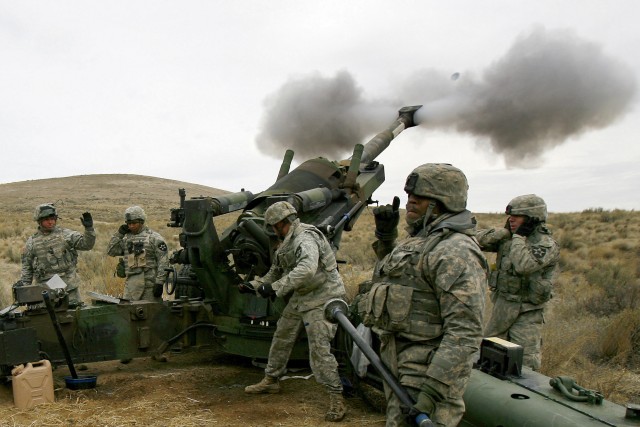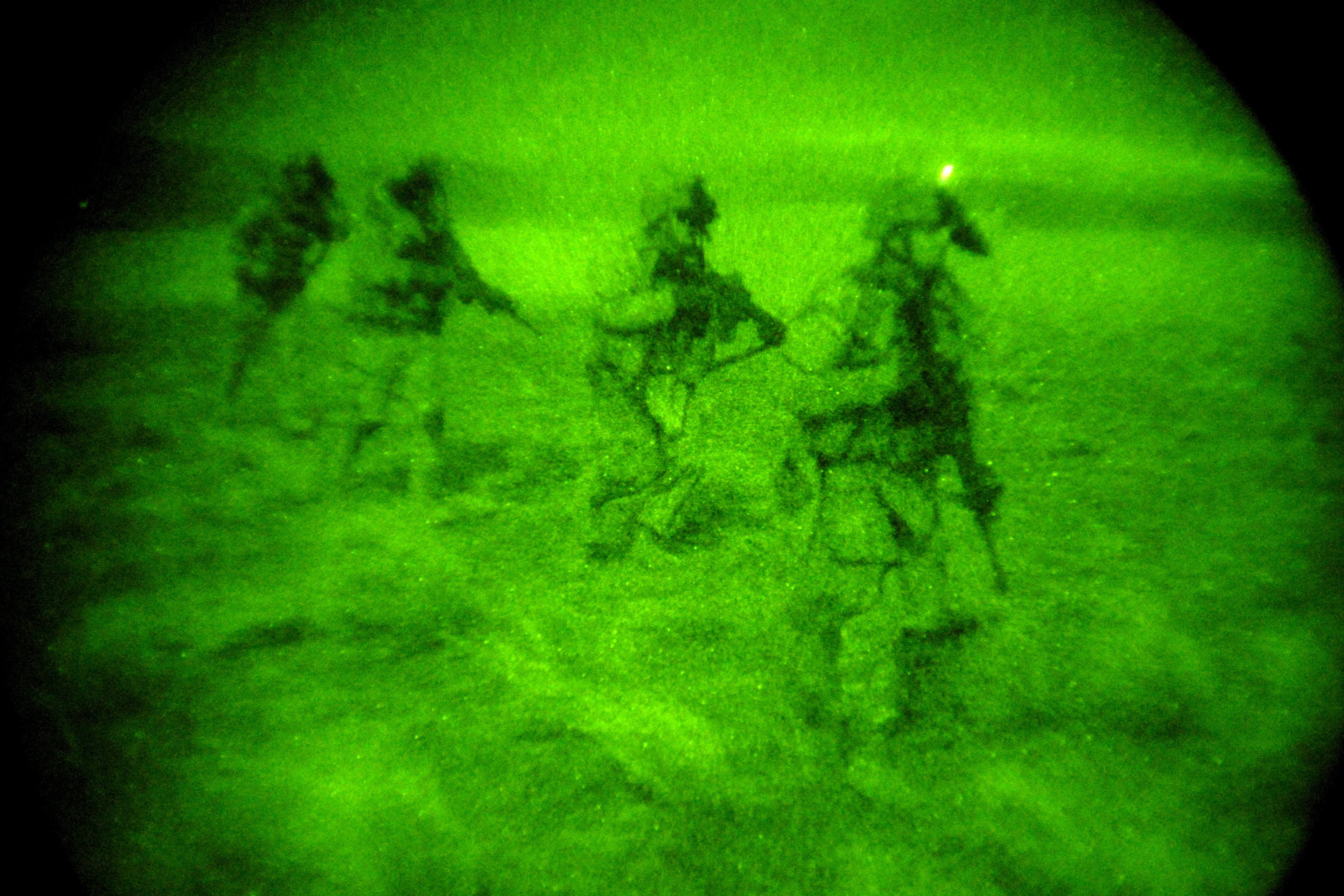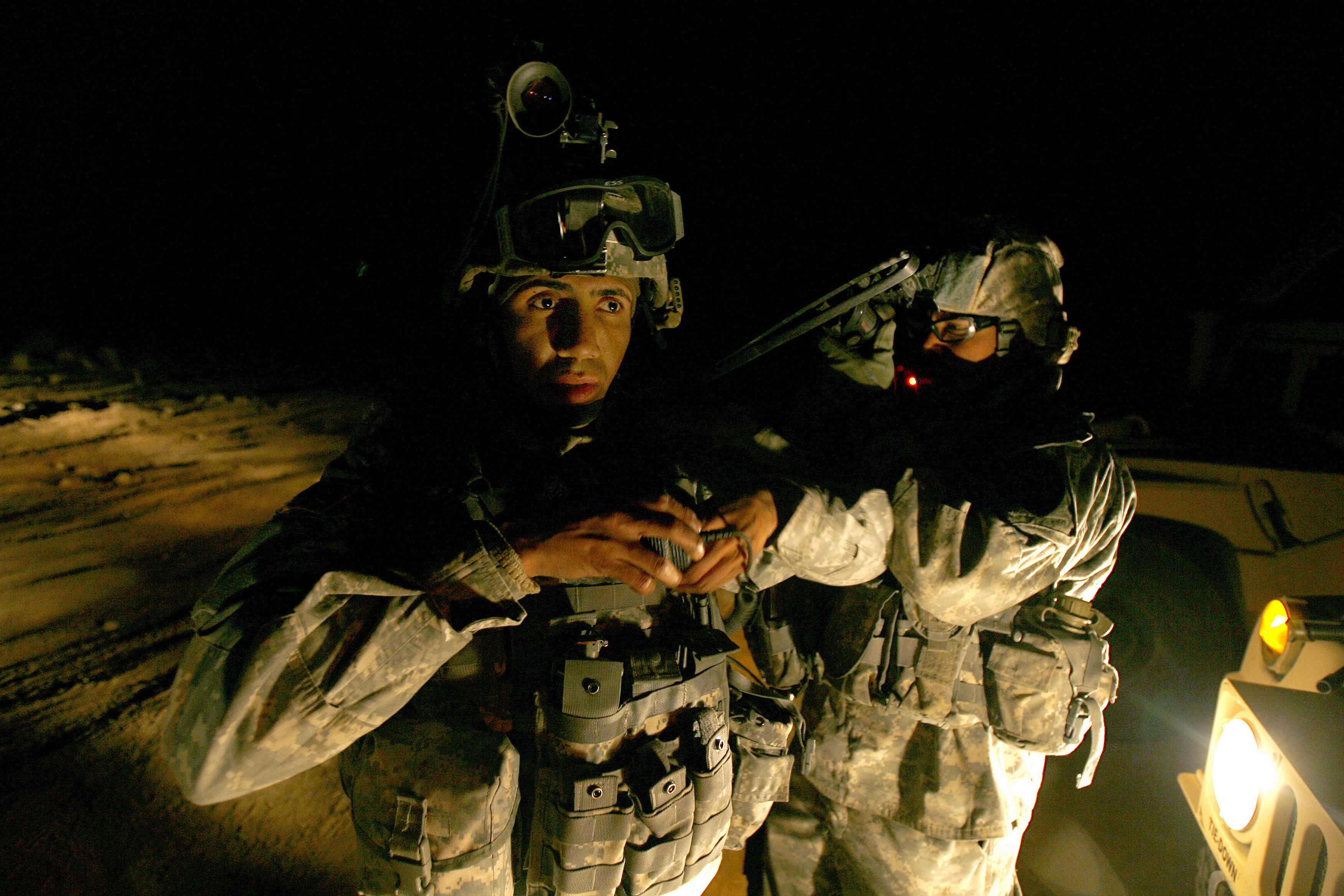FORT LEWIS, Wash. - The wars in Iraq and Afghanistan have changed the charge of field artillery units in Stryker brigade combat teams.
It is a rare occasion that all 18 howitzers in a battalion operate in unison, dropping ordnance on an enemy miles away, as they did in wars past.
The current battlefields in the Middle East and southwest Asia call for more well-rounded and flexible artillerymen. That is precisely what the Soldiers of 3rd Battalion, 17th Field Artillery Regiment have become as they demonstrated not only their precision with artillery, but also their collective prowess as light infantrymen during a Table XV certification and a maneuver live-fire exercise last week at the Yakima Training Center.
"We did (the Table XV) as part of battery ExEvals because we are asked to do two things. We thought it was important we added the artillery piece and not just the maneuver STX and company live fire, but also the indirect live fire to that," said battalion commander Lt. Col. Dennis Smith. "In Iraq, we could be shooting artillery one day then kicking in doors the next, so you've got to (be able to) flip the switch."
Each battery was tasked with completing both the Table XV and maneuver missions. Cobra Battery, however, was the only one to execute the maneuver exercise in the darkness of night.
With the thuds of B Battery's artillery rounds landing in the distance, the two platoons of Cobra Battery, one of Strykers and one of HMMWVs, moved through the rough terrain of YTC's Range 15 to five different objectives where squads, donning night-vision goggles, cleared out a series of buildings.
One of the objectives was a compound that included several houses needing clearing.
The first squad to enter the compound used a set of explosives to blow a hole into the outer wall, and then moved on to clear the buildings while fighting severe gusts of swirling wind and dust.
Another squad used a more direct technique to enter the compound, breaching its wall with a Stryker.
Having followed behind in his Stryker, Smith said he was happy with what he saw.
"I thought it went well, especially with limited visibility. That was the first time that the battery moved as a battery," he said. "It was good command and control. Procedurally, they were very sound. They're basic battle drills - entering and clearing rooms, moving from house to house, laying down suppressive fire - were done well.
"The communications between the two platoon leaders and the synchronization of fire, I think, went well."
Though operating in nonstandard missions in theater is not something that will be unique to 3-17 FA when they deploy next year, its use of Strykers will be.
"We understood coming in here that our job could be anything," said B Battery commander Capt. Geoff Marberry. "You really have to be a pentathlete and when I say that, (I mean) you have to be able to do multiple tasks.
"We're unique because there is no other artillery battery in the Army that are using Strykers. We don't have as many as the infantry companies do, but we can operate as an infantry company on a smaller scale."
Being able to, as Smith said, "flip the switch" from maneuvering to shooting artillery again was a bit of a challenge at first, said Marberry. But, he said, his Soldiers adapted quickly.
"This exercise ... has really challenged us," he said. "It was hard to come off Range 15 and transition to shooting artillery because it's been off of our mind for a while as we've been continuing to learn the infantry stuff. We periodically shot to maintain proficiency, but not at this level.
"But I'm very proud of my guys, because right now we're doing better than anybody else has done at this Table XV," he continued. "We're being top dog, and it just goes to show that these guys (are) really good Soldiers and have great leadership out there that have taken hours upon hours of time to train and retrain these guys on how to do this."
According to Smith, 3-17 FA has fired more non-artillery ammunition than any other battalion in 5th Brigade in the past year. Which, he said, the younger Soldiers have embraced and enjoyed.
It turns out he was right.
"I like being able to do two things," said Sgt. Ben Bridges of B Battery. "I like going down range and shooting some rounds. It's always a good time and all the Joes always have fun."
Private First Class Bruce Solter, of B Battery, said having the light infantry skill set makes him feel better prepared to spend a year in Iraq.
"It actually makes me feel more safe and confident for a deployment," he said, "because if things go bad, I know I've got the training I need to protect myself. You can't throw an artillery round (at an enemy) 15 feet away."
Smith said, on the whole, he is satisfied with where his Soldiers are at with their light infantry skills and that he feels they will be able to accomplish any such mission they are given while in theater.
B Battery's Pvt. 2 Tyress Riggins concurred with that assessment.
"All the other guys I work with, they enjoy it," Riggins said, "and I'm pretty confident we'll do good down range."
Eventually, field artillerymen may no longer need light infantry skills in future wars. But it is a current requirement, and is one Smith feels can be accomplished.
"You need boots on the ground," Smith said, "and a brigade combat team only has so many. And the use of artillery, although we employ it in Iraq and Afghanistan, is not to the extent that (it has been used in the past). So you've got another 400-man battalion that can provide the same thing, to a degree, that an infantry battalion can do. Albeit we have less equipment, we can still do it."
Matt Smith is a reporter with Fort Lewis' Northwest Guardian.






Social Sharing